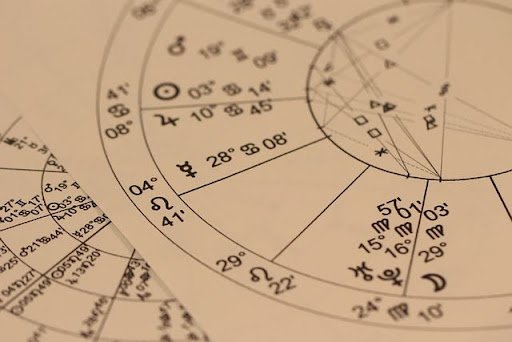Hamsa Yoga is an easy-to-practice session that includes Pranayama meditation and being aware of oneself. It helps in the overall aspect of a proper stance and well-being of the body and mind. If you introduce it as a part of your diet, you are likely to think through the problems more effectively, you will feel less stressed, and you will start feeling better. If you are a beginner or already practised yoga, here you will find simple advice to include Hamsa Yoga into your schedule.
What is Hamsa Yoga?
Hamsa Yoga is all about the breath with emphasis placed on the innate sound of the breath which is described as a sound of ‘Ham’ while inhaling and ‘Sa’ while exhaling. Such sounds are deemed as the sound of the soul and are universal. The term ‘Hamsa’ in Sanskrit means Swan, as well known, denotes elegance, purification, and ascendancy spiritually. In Hamsa Yoga, the breath to a large extent is used to harmonise inner energy, therefore giving people a sense of serenity.
Why Practice Hamsa Yoga?
The actual benefits of the Hamsa Yoga are not restricted to the physical makeover of an individual. This practice should be done to promote the growth of your mind, soul, and your entire body. Some key benefits include:
- Reduces stress: Breathing exercises, especially on the control of breathing that has an impact on calming the nervous system hence lowering anxiety and tension.
- Improves concentration: The practice of breathing exercises helps the mind to focus hence increasing the level of awareness.
- Increases mindfulness: When you practise Hamsa Yoga, you can remain present at the time you are practising hence encouraging a more conscious living.
- Promotes self-awareness: The act of paying attention to breath makes one feel or rather get a link to their spiritual being.
- Enhances relaxation: Practising yoga makes you feel so fresh and relaxed though you’re a working woman and you have had a rather hectic day.
Now, let’s explore how you can integrate Hamsa Yoga into your daily routine.
Start Your Day with Hamsa Yoga
The practice of Hamsa Yoga is suggested to be done in the morning because it contributes to setting the mood for learning and working further.
- Find a quiet spot: Either sit on the floor or on a chair of your choice provided that you should sit comfortably. This is because the back is supposed to be straight with the body relaxed at all times depending on the kind of work to be done.
- Focus on your breath: Take a deep breath and while doing that, use your brain to whisper the words “ham” and “hearing”. Breathe in the air with your lungs.
- Exhale slowly: There are two words here: when you exhale, you should pronounce the word ‘Sa, ’ as though you are blowing all the negative energy or thoughts.
- Repeat for 5-10 minutes: See for yourself that there is balance in deep and rate breathing. Please make sure that your spirit stays on and involved with the breathing process.
Evening Reflection with Hamsa Yoga
By the time you reach the last hours of your day, you will be able to relax from the stress that is synthesised by Hamsa Yoga. Here’s how to add it to your evening routine:
- Create a peaceful environment: The best thing might be to partially dim the light or even switch off the light and continue with the use of candles or soft music.
- Focus on your breath: One has to either lie on the back with the legs uncrossed or sit back; place the hands on the abdomen and start breathing in and breathing out deeply. During inhalation you should say ‘ham’ for the case of exhalation you should say ‘sa’.
- Reflect on your day: During every breath pause for a moment and count all the things that you are grateful for for the day. Release all the concerns and such matters which are unsolved.
- Practise gentle stretches: To help release physical tension, it is recommended to include the following easy yoga postures: seated forward bend (Paschimottanasana) or child’s pose (Balasana).
Hamsa Yoga During Challenging Moments
Real life can sometimes present people with situations they are not ready to face, and if a person has been practising Hamsa Yoga, they will be able to remain relaxed. Here’s what you can do:
- Pause and breathe: Less procedure is not fit for undertaking vast traffic; that’s why when you feel pressurised, it’s your time to take a deep breath. Concern about the “Ham” and “Sa” sounds to help you clear your mind.
- Be present: Hamsa Yoga protects one from signs of illness and is the best form of Yoga since it promotes mindfulness. If instead of taking action, you are in front of some stressful circumstance, you should just step back and watch without any negative emotions appearing.
- Take a few moments: Just a one to two-minute breathing exercise can help during stress-provoking circumstances by enabling a more reasoned response.
Incorporate Hamsa Yoga into Physical Activity
Hamsa Yoga may also be practised as part of the current exercise as long as the performer favours actual yoga poses. Ham Sa is followed during each pose to synchronise with the breathing muscles. With the approach of breath regulating and understanding of space and time, you can make your yoga sessions more profound, finding balance in both physical and spiritual levels.
Final Thoughts
One does not require a change of schedule or location to incorporate Hamsa Yoga into their routine. Even simply closing your eyes and taking deep breaths for a few minutes can help in achieving a more peaceful and mindful state. From practising Hamsa Yoga in the morning to taking short Pranayama breaks throughout the day, the practice incorporates your daily life so well to deal with issues without stress or tension.
Stay in touch to get more updates & alerts on TubeGalore! Thank you



